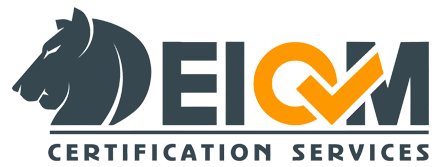Table of contents
The Purpose of ISO 13606
ISO 13606 was created to address a critical need: the interoperability of healthcare data. Interoperability is the ability of different information systems to communicate and share data effectively. In the healthcare sector, this means that patient records should be accessible and understandable across different hospitals, clinics, and healthcare providers, regardless of the software or platforms they use.
The key objectives of This standard are:
- Enabling the secure sharing of EHRs between healthcare providers.
- Ensuring that patient data is consistent, accurate, and reliable.
- Facilitating better decision-making through comprehensive data access.
Historical Background
Before the advent of electronic health records, patient information was stored manually, which made data sharing difficult, slow, and prone to errors. With the digitalization of healthcare, the need for standards like ISO 13606 became apparent. This standard emerged as a solution to the growing challenges in managing electronic health data across diverse healthcare systems.
The development of ISO 13606 reflects the evolution of healthcare informatics, where the need for a unified approach to handling EHRs became increasingly critical.
ISO 13606 Structure
ISO 13606 is divided into five distinct parts, each serving a specific function in ensuring the effective communication of health records:
-
Part 1: Reference Model
This section defines the basic structure for the representation of health information in EHRs. It establishes how health records should be organized and structured to ensure consistency. -
Part 2: Archetype Interchange Specification
This part focuses on how to exchange archetypes, which are templates that define how health data should be structured. It allows for flexibility in how information is captured while maintaining standardization. -
Part 3: Reference Archetypes and Term Lists
Here, ISO 13606 defines a set of standard archetypes and terminologies to be used for health data, ensuring that medical terms and structures are uniform across systems. -
Part 4: Security Features
Security is a critical aspect of health informatics, and this section outlines the security protocols required to protect patient data, including encryption and access control measures. -
Part 5: Interface Specification
This final part provides guidelines on how healthcare systems should implement the standard for effective communication and data exchange.
The Role of Archetypes in ISO 13606
Archetypes play a crucial role in the ISO 13606 standard. In the context of healthcare informatics, an archetype is essentially a template that defines the structure of clinical data. It enables healthcare systems to capture detailed patient information in a way that can be easily shared and understood by other systems, regardless of differences in software.
This approach allows healthcare organizations to adapt to evolving medical knowledge and practices without losing consistency in how data is structured and shared.
Ensuring Data Security and Privacy
Data security and privacy are paramount in healthcare. ISO 13606 emphasizes stringent security measures to ensure that patient data remains confidential and is only accessible by authorized personnel. This includes encryption, which protects data during transmission, and access control mechanisms to ensure that only qualified healthcare professionals can access sensitive health records.
By focusing on both interoperability and security, ISO 13606 helps healthcare providers balance the need for data sharing with the ethical and legal requirements for protecting patient privacy.
Interoperability in Healthcare
Achieving true interoperability in healthcare is challenging, largely due to the fragmented nature of healthcare systems and the varying formats in which patient data is stored. ISO 13606 provides a framework that bridges these gaps, enabling healthcare providers to exchange data seamlessly.
By ensuring that health records are structured in a standard way and can be exchanged securely, ISO 13606 addresses one of the biggest hurdles in modern healthcare: the inability to share data efficiently between different institutions.
Benefits of ISO 13606 Implementation
Implementing ISO 13606 can significantly improve communication between healthcare providers. When healthcare professionals have access to accurate and up-to-date patient records, it leads to better decision-making and improved patient outcomes. The ability to share EHRs efficiently can also reduce redundant testing and procedures, leading to cost savings for both patients and healthcare providers.
Conclusion
ISO 13606 is a crucial standard for the future of health informatics. By enabling the secure and standardized exchange of electronic health records, it helps healthcare providers deliver better care, reduce costs, and improve patient outcomes. As healthcare becomes increasingly digital, ISO 13606 will play an even more important role in ensuring that patient data is shared effectively and securely across different systems and borders.

